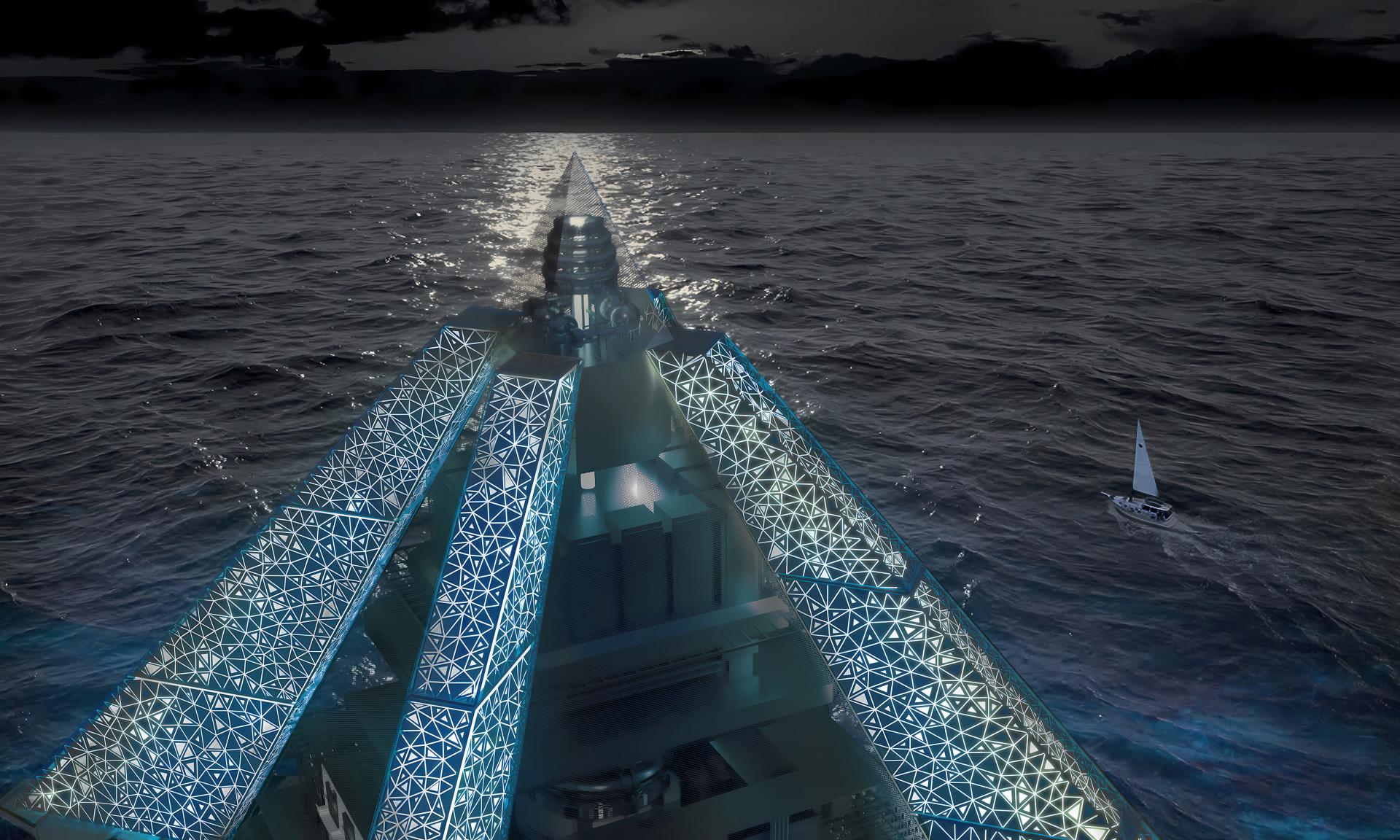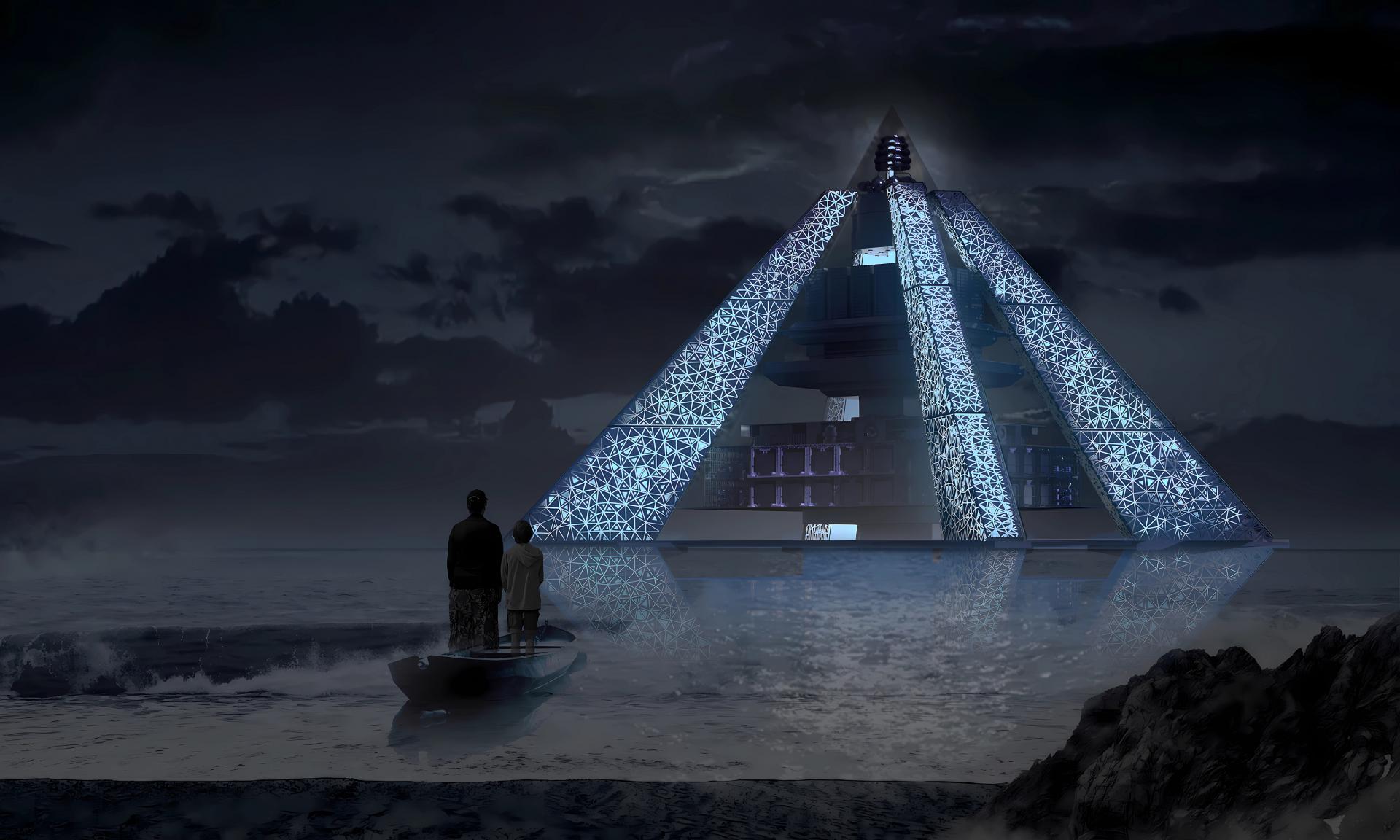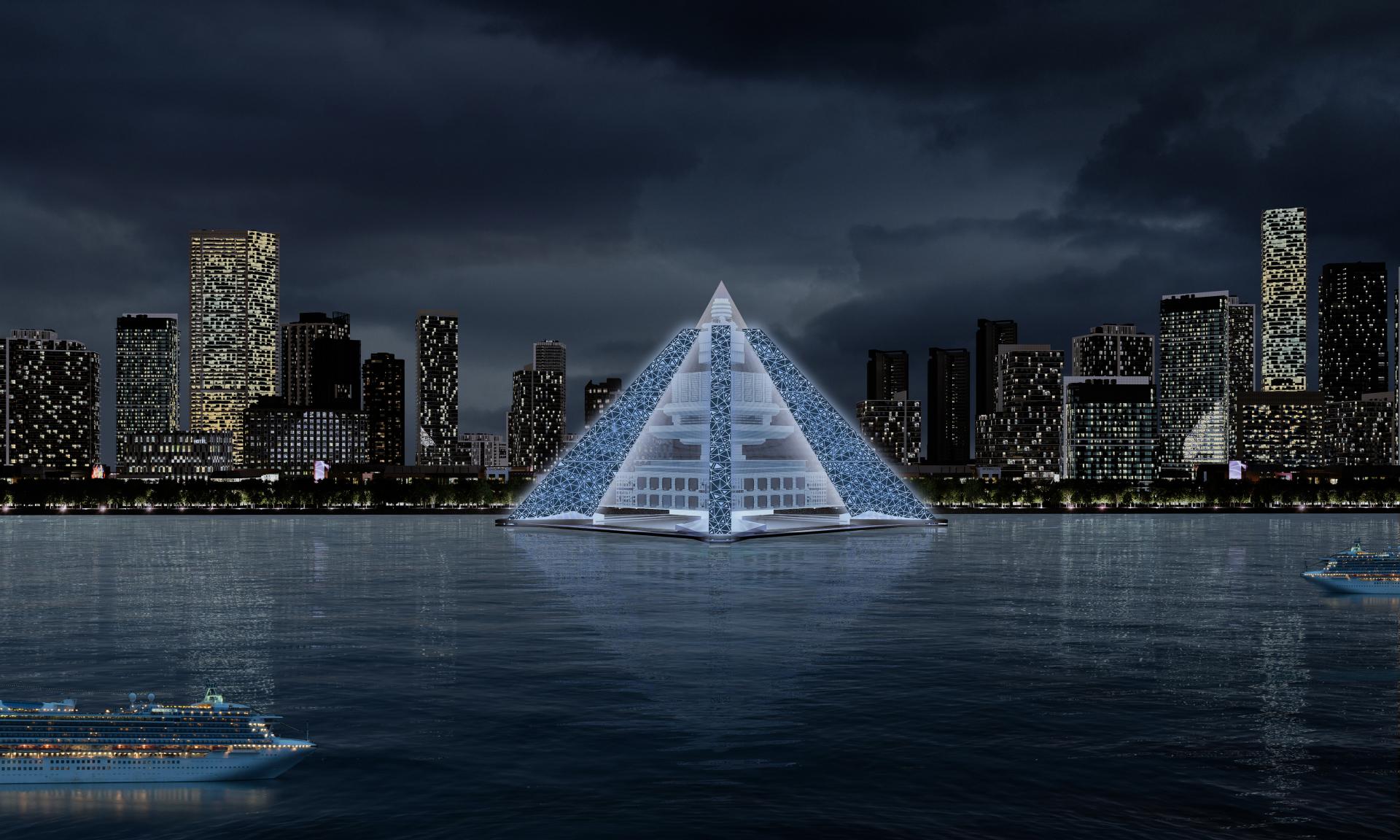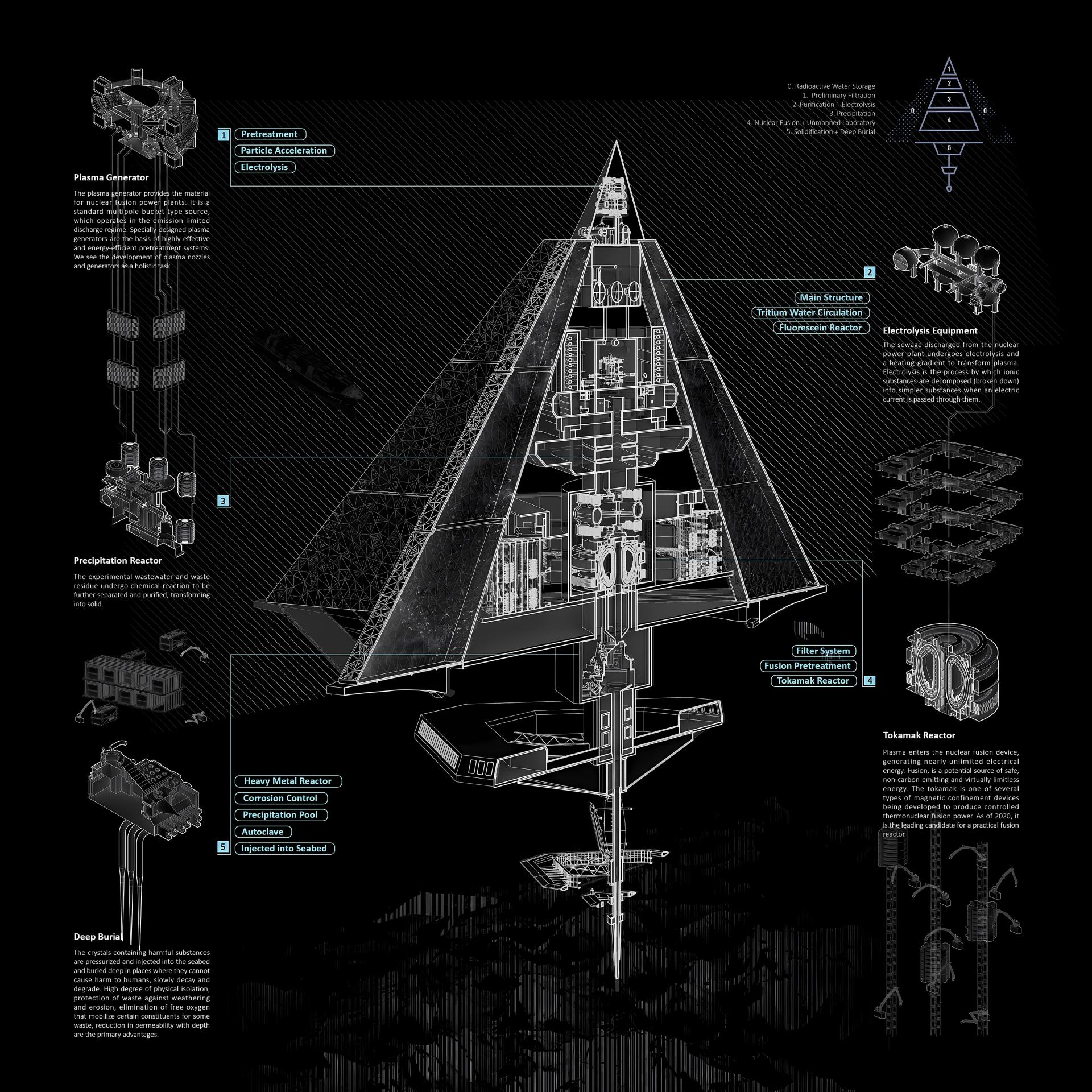2024 | Professional

Vigilance in Fluorescence
Entrant Company
Studio Tang
Category
Architectural Design - Conceptual
Client's Name
Country / Region
United States
The Fukushima Daiichi Nuclear Disaster was one of the most severe nuclear accidents in history, leaving unresolved issues and ongoing impacts on all mankind. In 2020, the Japanese government decided to pour wastewater into the ocean and let the ocean dilute it. Once Japan discharges nuclear waste, it will leave an irreversible negative impact on humans, other creatures, and the planet lasting for generations.
In the 1960s, scientists put forward a concept called the Tokamak reactor. Nowadays, nuclear physicists have made great progress on this technique. Based on the Tokamak reactor, we assumed the recycling process includes 6 steps: electrolysis, turning wastewater into plasma status. Nuclear fusion power generation through tritium. The residue from the process could become experimental material used in the nuclear energy lab, and wastewater and solids will be turned into ceramic crystals through separation, purification, high temperature, and high-pressure treatment. Finally, it will be transferred into the oceanic trench and isolated there. Besides, in this energy circulation procedure, radioactive material decays, emitting energy and reacting with fluorescent proteins. That is why the building will have fluorescent lights at night time.
Considering the potential nuclear pollution for the whole planet and people’s carelessness with nuclear waste treatment, we propose a fluorescent memorial pyramid for the Fukushima Daiichi plant. It not only disposals the radioactive water, preventing the wastewater from being poured into the ocean; but also works as an ecological and environmental warning, reminding people of the tremendous hazard of nuclear pollution with the fluorescence generated from the radioactivity of tritium. The project consists of two kernels; one is the radioactive water disposal system: to convert tritium - the main radioactive material remaining in radioactive water into electrical energy beneficial to the development of human society; the other is the fluorescent water tower: to take use of radioactivity of tritium to create fluorescence as an alarm to elevate awareness of human towards the double sides of nuclear power.
Credits

Entrant Company
MOSLATE (HONG KONG) GROUP LIMITED
Category
Packaging Design - Beauty & Personal Care


Entrant Company
Pastella Burns
Category
Architectural Design - Residential


Entrant Company
Black N White Haus Pte Ltd
Category
Interior Design - Other Interior Design


Entrant Company
Wang Bo
Category
Interior Design - Residential






